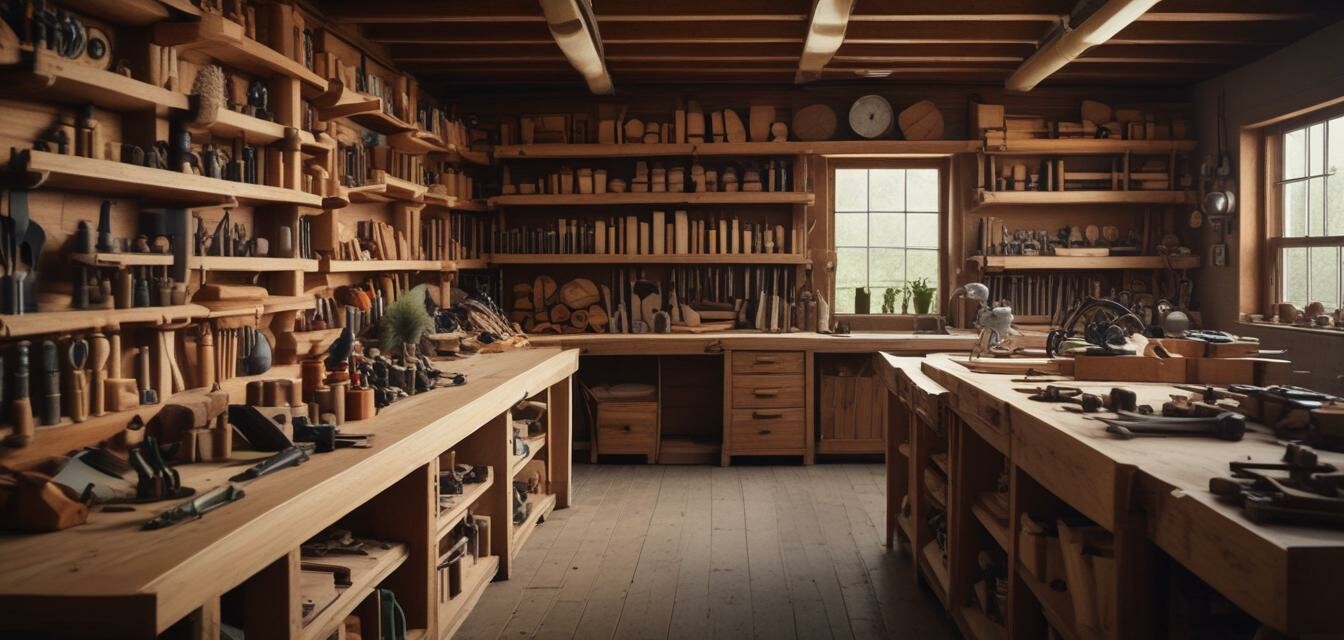
How to Create a Zero-Waste Woodworking Workshop
Key Takeaways
- Implement recycling and reuse practices for materials.
- Choose sustainable tools and finishes for your projects.
- Utilize offcuts and scraps creatively to reduce waste.
- Explore eco-friendly storage solutions in your workshop.
- Stay informed about sustainable practices within the woodworking community.
Setting up a woodworking workshop that emphasizes sustainability and minimal waste is an admirable goal and essential for eco-conscious woodworkers. Adopting zero-waste practices not only helps the environment but also enhances the creativity and efficiency of your woodworking projects. In this guide, we’ll explore various tips and techniques to create a zero-waste woodworking workshop while maximizing the potential of every piece of wood.
Why Go Zero-Waste?
A zero-waste workshop promotes sustainable practices that significantly reduce the amount of waste generated during woodworking processes. Diving into these practices supports the environment while also catering to a broader movement towards sustainability. Here are some benefits of adopting a zero-waste philosophy in your workshop:
- Reduces environmental impact
- Enhances creativity by challenging material use
- Fosters a deeper connection with materials
- Can lower costs by maximizing resource efficiency
Essential Practices for a Zero-Waste Workshop
Material Reuse and Recycling
In a woodworking workshop, materials can often be repurposed or recycled. This section discusses effective strategies to minimize waste:
- Collect Offcuts: Save all your offcuts and scraps for future projects. Create a dedicated storage space for these pieces.
- Don’t Discard: Consider using offcuts for smaller projects, prototypes, or even as fuel for your fire pit.
- Recycle Unusable Wood: If pieces are non-reusable, check if they can be recycled. Many local recycling centers accept discarded wood.
Choose Sustainable Materials
Selecting sustainably sourced materials is crucial for a zero-waste workshop. Opt for:
- Reclaimed Wood: Use recycled wood that has been salvaged from buildings or other structures.
- FSC-Certified Lumber: Choose wood products that are certified by the Forest Stewardship Council, which promotes responsible forest management.
- Eco-friendly Finishes: Implement finishes that are free from harmful chemicals. Explore the range of eco-friendly wood polishing techniques available in our Buying Guides.
Creative Solutions to Reduce Waste
Beyond just recycling, there are several creative solutions that can help minimize waste:
| Strategy | Description |
|---|---|
| Wood Chips and Shavings | Utilize leftover wood chips and shavings as mulch in your garden or as bedding for pets. |
| Make Dust into Art | Combine wood dust with adhesives to create unique sculptures or to fill gaps in furniture. |
| Bundle Small Pieces | Create decorative items or art pieces from bundled small scrap pieces. |
| Gift Small Projects | Make smaller items as gifts or sell them to friends and family to make use of surplus material. |
Eco-friendly Storage Solutions
Effective storage can also significantly reduce waste. Keep your workshop organized to avoid unnecessary waste:
- Use transparent bins for easy visibility of materials.
- Label storage areas to encourage efficient material retrieval.
- Implement mobile storage solutions to optimize space.
Getting Involved in the Community
A zero-waste workshop doesn’t have to be a solo endeavor—you can benefit greatly from community engagement:
- Participate in local woodworking or sustainability meetups.
- Join online forums to share ideas and projects related to zero-waste practices.
- Explore articles in our News and Trends section for the latest tips.
Pros
- Encourages creativity with wood use.
- Reduces overall costs by reusing materials.
- Contributes positively to the environment.
Cons
- Requires effort to implement and maintain.
- Initial setup may take time for organization.
In Conclusion
By setting up a zero-waste woodworking workshop, you’ll not only be doing your part for the environment but also enhancing your woodworking journey. Each piece of wood has the potential to become something beautiful, even in its smallest pieces. Consider starting your sustainable woodworking practices today, and watch how it transforms your creations. For more insights into sustainability in woodworking, explore our Sustainable Practices category.